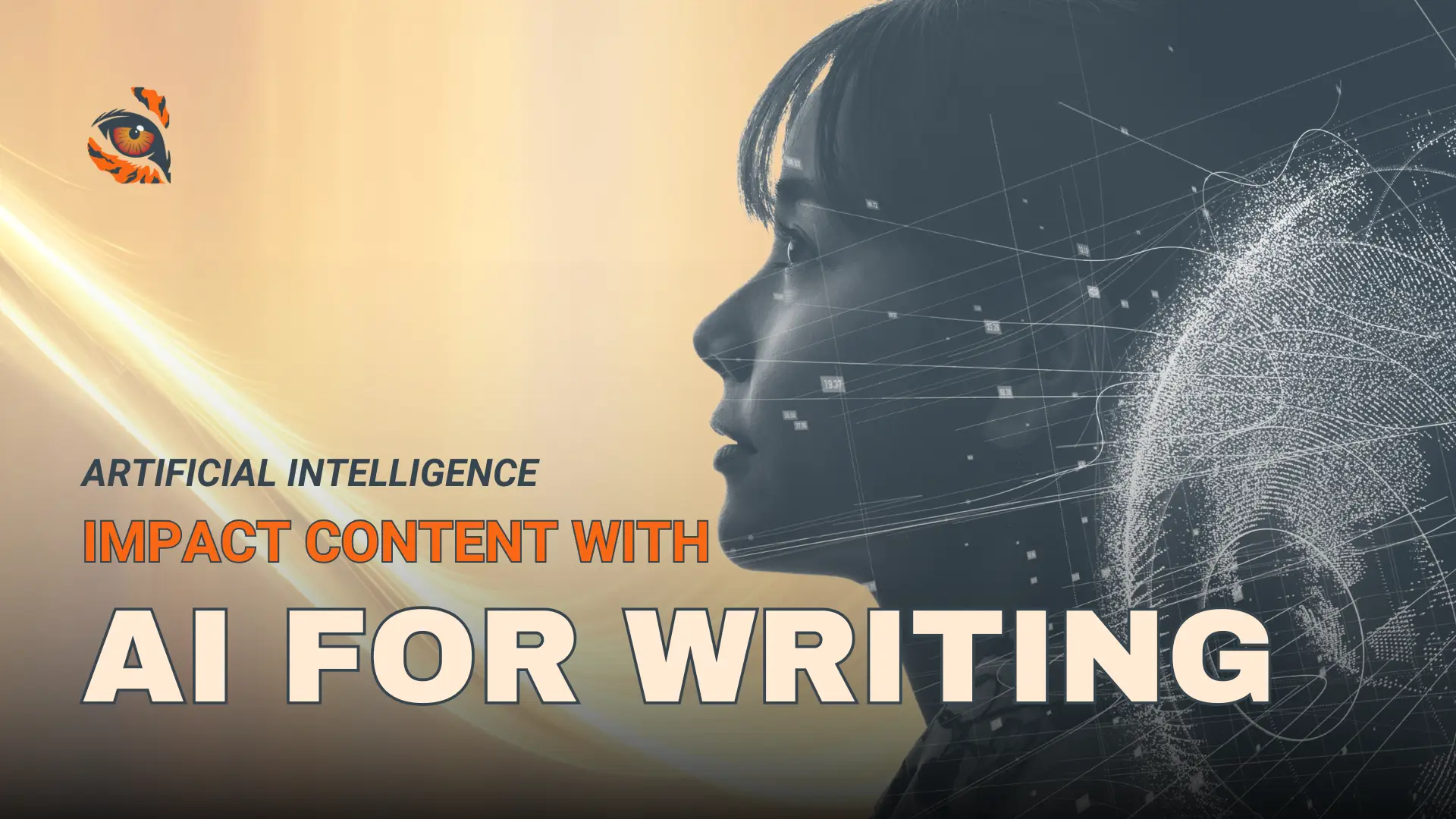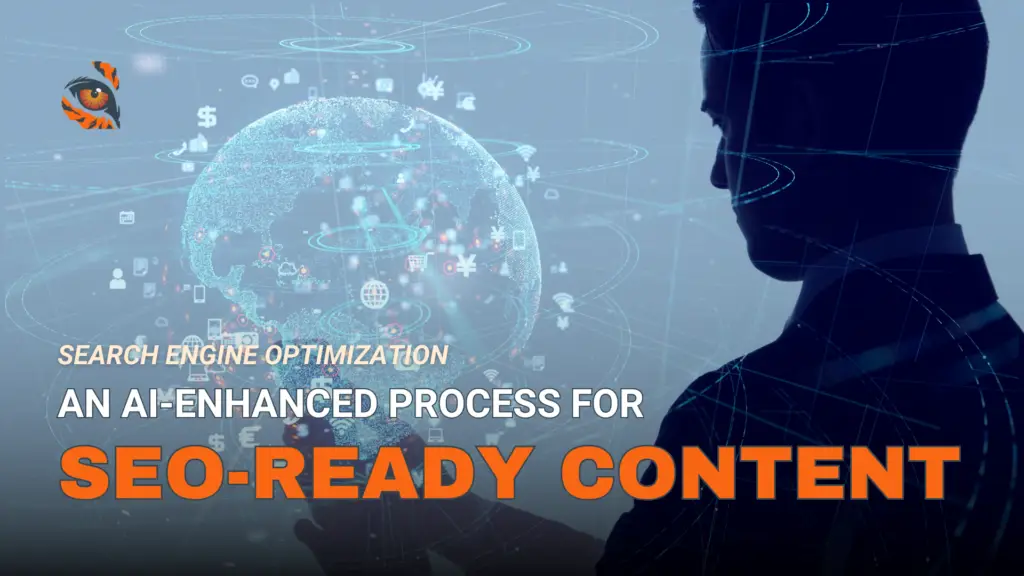Using AI to Write Content That Customers Actually Want to Read

Many marketers dip their toes into AI waters believing their baptisms will yield instant results. Others resist, leery of AI threats to their job security. To date, both points of view have been wrong. AI alone does not write well. But AI as a co-creator can enhance marketing copywriting when you need a boost.
By Jared Frank | 7 min read
Last Updated: February 13, 2025
Let’s be honest. There is a lot of crappy AI content out there today. And a lot of AI software providers and YouTubers pitching shiny objects with immediate results. Publish 2,000 blogs instantly!
The biggest problem with AI-written content is that it is clearly AI written. And the watered-down machine tones don’t appeal to prospective human buyers who are searching for in-depth information on your wares while connecting with your brand.
I’m watching the space closely as there is reason to believe the tech could be good enough to deliver one day. That day is not today. Today, the writing is deodorized fluff without any high-impact outcomes.
At the end of the AI day, content marketers still need a consistent, disciplined, creative writing process of brainstorming, outlining, drafting, and revising as their foundation to turn out material that motivates customer decisions in their favor. When used effectively, AI is positioned as a collaborator, not a substitute, within each tried-and-true step of the writing process.
Within those steps, there are moments where AI shines… if your goal for using AI to write content is augmentation, not automation. You can speed up areas in your workflow, but you can’t snap your fingers. Writing isn’t a magic show. It still requires emotional calories and a time commitment, but less of one if you are effectively using AI to write content.
Key Takeaways
AI eliminates time wasted staring at a white blank page. Through all phases of the writing process – brainstorming, outlining, drafting, and revising – AI is a great tool for getting started and failing forward.
Content generated exclusively from AI is nothing but fluff and filler. Writers must partner with AI and manually add unique personality, company nuances, and alignment with strategic objectives.
The human voice cleans sanitary AI messages, touches our hearts, and creates lovers of brands. Don’t leave this most important tool collecting dust when writing content for your most passionate followers.
When to Use AI to Write Content
Whatever your writing assignment, AI can integrate into the steps for completing the assignment. Blogs, emails, social media posts, white papers, product descriptions, webpages, pitch decks, proposals, reports, keynote presentations, et al… AI is here to assist.
Zooming out for a moment, human beings should not use AI to complete projects they love doing. This philosophy applies to all things. And in this article, it means if you love to write, don’t outsource that love away exclusively to AI. If you love to write, use it less. If you hate to write, use it more. Then copy-paste that approach to all AI use cases.
In this article, I am assuming you don’t hate writing all the time. Even the best writers hate writing sometimes. Most of you will be familiar with the stereotype that “writers have the cleanest apartments”, meaning writers will do anything, literally anything, even clean their apartment, to avoid writing. Facing the white blank page can be crippling.
Using AI to Brainstorm
AI excels at permitting writers messy apartments. It slays the blank-page dragon.
It’s easier to edit someone else’s ideas than it is to come up with our own. Make AI your someone else. Large language models (LLMs) instantly create fresh ideas, points of view, and supporting research when prompted to do so. In each prompt, be sure to include your core message, target audience, and expected business outcome.
It remains incumbent on the marketer to set the strategic goal for the writing, filter all AI-generated ideas for relevance, verify all research, and bring a unique perspective to the wordsmithing.
But AI is a great tool for getting started.
Using AI to Outline
Many storytelling frameworks exist. Marketers should deploy the one that resonates best with their audiences. I find the Storytelling for Business framework (Purpose, Hook, Tension, Insight, Resolution) taught at Section School to be an effective one.
You can prompt AI to suggest and craft a compelling story using that framework, and it will instantly create an outline for you. The writer’s jobs become editing the AI-generated outline for clarity, prioritizing key points while eliminating non-essential ones, integrating unique institutional knowledge that AI doesn’t know, and ensuring alignment with strategic objectives.
Using AI to Write the First Draft
Even Shakespeare at the height of his powers struggled with a first draft. AI struggles equally. It just fails faster. Like the brainstorming step, the blank page fills up instantly and gives the human writer something to react to and build momentum from.
It’s important not to just jump headfirst into the first draft. Most of your writing time should be spent (and saved) in the brainstorm and outline phases. The better your brainstorm, the better the outline. The better your outline, the better the draft.
At this point, writers will need to roll up their sleeves and prepare to do hard work themselves, either writing the first draft on their own or after the first draft is created by AI. In the case of AI-generated first drafts, the process becomes iterative – context is added, follow-up prompts are given, and lots and lots of editing is applied to each new draft spit out by the machine. When editing, be sure to adjust for brand guidelines, tone, and style, as well as cultural sensitivities and specific audience needs.
Using AI for Revisions
Generative AI is much more than traditional spell check. Now the AI will catch contextual errors (e.g. “affect” versus “effect”), structural mistakes (e.g. passive versus active voice), style suggestions (e.g. less formal, more concise), and flow across paragraphs (e.g. if the same word is used in consecutive sentences). If you are a WordPress user, the Yoast SEO plug-in that comes preloaded tackles all these areas for you, improving readability, as well as on-page and off-page SEO.
If you deploy Microsoft Word as your preferred word processor, the software now features Copilot, which gives you an AI collaborator natively within Word, as well as throughout the Microsoft ecosystem.
Similarly, ChatGPT now offers its Canvas interface, which elevates the LLM beyond a simple chat. Canvas allows writers to work on a document live with ChatGPT. The Canvas toolbar offers the writer an easy path to making suggested edits, adjusting the document’s length, changing its reading level, and even adding emojis if that’s your brand’s thing.
Your Most Important Tool Is Not AI
Like you’ve heard me say a thousand times across this website, regardless of how great the AI output seems to be at a glance, it is always the human’s responsibility to review before distributing. The AI might proofread for grammar, typos, sentence structure, and readability, but only the human writer can add emotional depth, brand personality, final polish, and then sign off for publication.
AI-generated content sounds like it was written by, well, AI. That’s not what resonates with your existing or prospective audiences. Yes, use AI to assist with writing. No, don’t outsource writing completely to AI. It’s the human voice that cleans sanitary AI messages, touches our hearts, and creates lovers of brands. So when using AI, don’t leave this most important tool collecting dust when writing content your followers actually want to read. ![]()
Do you need help writing for your business? Let’s chat.
Write to Jared at [email protected].
RELATED CONTENT

Blank Page to Published: How to Write SEO-Ready Content in 8 Simple Steps
The reports of the death of SEO are greatly exaggerated. Conversational AI tools like ChatGPT have shifted how people conduct research, but they don’t make SEO obsolete. They just require businesses to adapt.

An Overview of the Best AI Marketing Tools for Your Small Business
Hundreds of AI marketing tools now exist to assist marketers with their craft. With the incredible volume of tools available, it can be overwhelming to shop for the right ones. Ditch the anxiety with this buyer’s guide of top tools.

